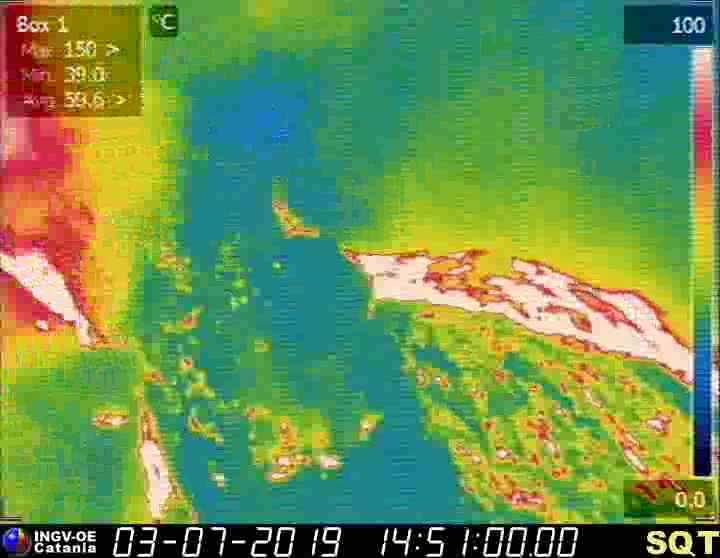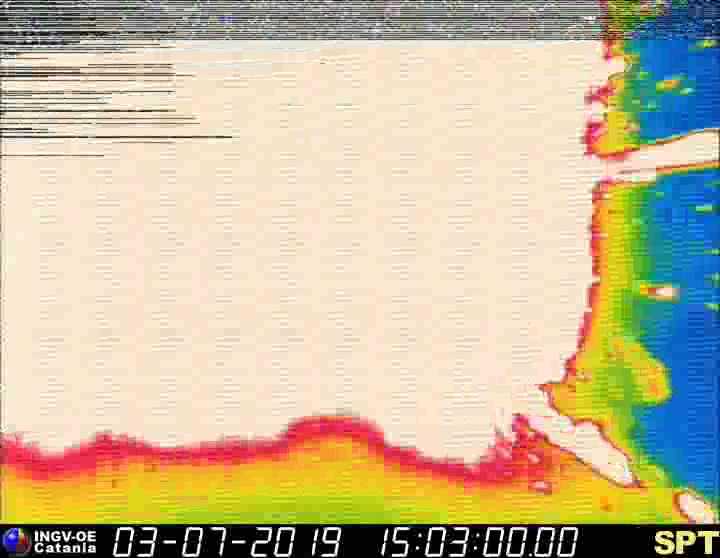Major explosion at Stromboli volcano, Aviation Color Code Red, Italy

A major paroxysmal eruption took place at Stromboli volcano, Italy at around 10:17 UTC on August 28, 2019.
The explosion has affected the central-southern area of the crater terrace, INGV said. The products generated by the explosion spread throughout the terrace and along the Sciara del Fuoco, rolling down to the coastline. The phenomenon in question is also visible on the seismic track.
The Aviation Color Code has been raised to Red.
"For the moment it is highly unlikely that there will be excursions onto the summit of Stromboli anytime soon. The whole handling of tourism on this volcano will certainly be thoroughly reviewed. With explosions like those of July 3and today, there would have been no chance of survival for anybody at the summit," INGV's Boris Behncke said.
Ancora #stromboli pic.twitter.com/rMKrZwl4ml
— Gregorio (@QualcunoBara) August 28, 2019
We were just at #Stromboli volcano watching the small eruptions. We left and then this giant eruption happened! #volcano pic.twitter.com/gQHjXuH9l3
— Nicole Bremner (@NicoleBremner) August 28, 2019
INGV reported that Stromboli’s crater terrace activity was analyzed during August 5 – 11 through webcam views, and field inspections during August 7 – 8. At least nine vents in Area N (north crater area, NCA) were active on August 7, three of which had well-formed spatter cones, with Strombolian activity ejecting material 150 m (492 feet) high.
A large scoria cone in Area C-S (South Central crater area) jetted material 200 m (656 feet) high. Lava from Area C-S vents continued to travel down the upper part of the Sciara del Fuoco, reaching 500 – 600 m (1 640 – 1 968 feet) elevation.
At least two powerful explosions took place at Stromboli volcano, Italy on July 3, 2019, killing one person.
The sequence was preceded by lava spills from all active mouths at 14:44 UTC. A strong intensity explosion took place at 15:16 UTC, producing an ash column up to 2 km (1.2 miles) above the summit, dispersing in a SW direction.
This is certainly the strongest explosion at Stromboli since March 2007, Behncke said at the time.




— Anil Charley (@CharleyAnil) July 3, 2019
The vulcano #Stromboli just erupted. Never seen something like that. pic.twitter.com/YmPnwaWRVC
— Carmelo Saia (@SaiaCarmelo) July 3, 2019
Volcano on #Italy's Mediterranean island of #Stromboli erupts, frightening locals and tourists residing on the island and nearby resorts pic.twitter.com/1FTUcVM0K8
— EHA News (@eha_news) July 3, 2019
Leaving #stromboli I’ve never feel so much fear in my life. pic.twitter.com/j33oo3FKKL
— n-il (@nil87739678) July 3, 2019
Stromboli in azione pic.twitter.com/iH2iVMLIep
— marco ortenzi (@mortenzi) July 3, 2019
#Stromboli at lunchtime today and then again at 17:00. Big eruption. Hope all okay. pic.twitter.com/2YOFVu0TFW
— Neil Flint (@njf03) July 3, 2019
Leaving #stromboli I’ve never feel so much fear in my life. pic.twitter.com/j33oo3FKKL
— n-il (@nil87739678) July 3, 2019
You're just about to hike up Stromboli and it explodes and the whole island is evacuated to a safe zone.#stromboli pic.twitter.com/qSYkf6eZRm
— donovan suddell (@donovan950) July 3, 2019
Was out enjoying nice day on Italian sea when the volcano they say “never has big eruptions” had a major eruption. #Stromboli pic.twitter.com/ij5CagZZtd
— Ben Meisel (@BenrulesYEE) July 3, 2019
#Stromboli eruptions: panic among tourists!https://t.co/pTcqzHYVl8 pic.twitter.com/wESpXdRetX
— SkylineWebcams (@SkylineWebcams) July 3, 2019
Geological summary
Spectacular incandescent nighttime explosions at this volcano have long attracted visitors to the "Lighthouse of the Mediterranean."
Stromboli, the NE-most of the Aeolian Islands, has lent its name to the frequent mild explosive activity that has characterized its eruptions throughout much of historical time. The small, 924-m-high (3 031 feet) island is the emergent summit of a volcano that grew in two main eruptive cycles, the last of which formed the western portion of the island.
The Neostromboli eruptive period from about 13 000 to 5 000 years ago was followed by formation of the modern Stromboli edifice. The active summit vents are located at the head of the Sciara del Fuoco, a prominent horseshoe-shaped scarp formed about 5 000 years ago as a result of the most recent of a series of slope failures that extend to below sea level.
The modern volcano has been constructed within this scarp, which funnels pyroclastic ejecta and lava flows to the NW. Essentially continuous mild strombolian explosions, sometimes accompanied by lava flows, have been recorded for more than a millennium. (GVP)
Featured image credit: Nicole Bremner (@NicoleBremner)

Commenting rules and guidelines
We value the thoughts and opinions of our readers and welcome healthy discussions on our website. In order to maintain a respectful and positive community, we ask that all commenters follow these rules.